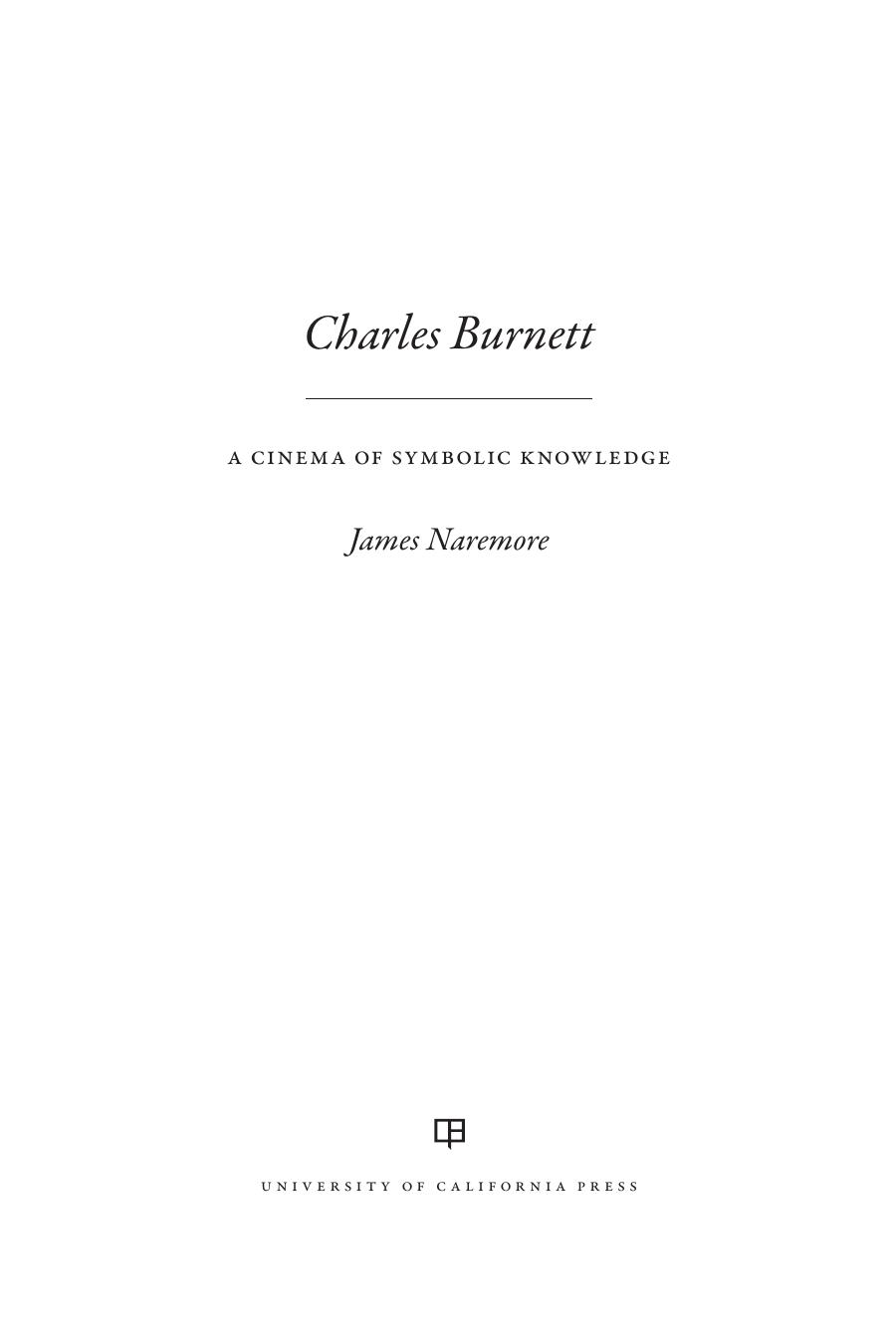Charles Burnett: A Cinema of Symbolic Knowledge by James Naremore

Author:James Naremore [Naremore, James]
Language: eng
Format: epub, pdf
Tags: Biography & Autobiography, Entertainment & Performing Arts, Performing Arts, Film, History & Criticism, Individual Director, Direction & Production, History, African American
ISBN: 9780520960954
Google: n641DwAAQBAJ
Publisher: Univ of California Press
Published: 2017-10-17T00:50:38.593000+00:00
NIGHTJOHN
One of Burnett’s most impressive films, worthy of discussion alongside any of his theatrical features, is Nightjohn, an adaptation of a young adult novella by Gary Paulsen, coproduced by Disney and Hallmark and aimed primarily at a family audience of teens and adults. Although the film was originally shown on TV, it had a strong critical reception. Terence Rafferty of the New Yorker named it the best American picture of the year, the National Black Programming Consortium chose it as best drama of the year, and several art cinemas screened it. At one point Disney offered to give away free VHS copies as a public service, but rescinded the offer when the demand became too great.
Gary Paulsen’s successful novella and its sequel, entitled Sarny, are told from the retrospective, first-person viewpoint of a slave girl named Sarny, whose life is changed by the almost mythical Nightjohn, an escaped slave who returns to the South to teach other slaves how to read and write. This character is indirectly based on men who actually existed, though little is known about them. Early in the novella, he’s described as extremely black, and this may be one reason he’s called Nightjohn. At one point he identifies himself as “John Niger,” which suggests that he’s from Niger; his fellow slaves probably think he’s saying “Night,” and this, too, may account for the name. More significantly, he does his teaching at night. “We all have to read and write,” he insists, “so we can write about this—what they doing to us. It has to be written.” But most of Nightjohn’s potential students don’t want such skills, for even the mildest form of literacy is forbidden by their owners and punishable by dismemberment or death. Sarny, however, is an exception to the rule; eager to learn, she escapes punishment and leaves a written account of her teacher’s heroism. (It has been estimated that by the end of the Civil War roughly 10 percent of the emancipated slaves were literate.)
A complicated period film shot with a modest budget on a tight schedule, Nightjohn takes a “realist” approach to costumed history, in the sense that, like Selma, Lord, Selma, it treats the past as if it were unproblematically available for representation in the present. It differs, for example, from Burnett’s later treatment of the same historical period in Nat Turner: A Troublesome Property, in which the problem of truthfully representing history is foregrounded. Most history films and novels have a realist form, and there is always a danger, at least theoretically, that their ideological purposes will be concealed by their apparent claims to unmediated truth. Where films about slavery are concerned, the theoretical issue takes on importance because the origins of the Hollywood historical film can be traced back to D. W. Griffith’s appalling racism in Birth of a Nation (1915). Nightjohn belongs to a series of black-written or -directed films—the two TV adaptations of Alex Hayley’s Roots (1977 and 2016), Gordon Parks’s Solomon Northup’s Odyssey (1984), Steve McQueen’s
Download
Charles Burnett: A Cinema of Symbolic Knowledge by James Naremore.pdf
This site does not store any files on its server. We only index and link to content provided by other sites. Please contact the content providers to delete copyright contents if any and email us, we'll remove relevant links or contents immediately.
| Actors & Actresses | Directors |
The Kite Runner by Khaled Hosseini(5087)
Gerald's Game by Stephen King(4584)
Dialogue by Robert McKee(4326)
The Perils of Being Moderately Famous by Soha Ali Khan(4171)
The 101 Dalmatians by Dodie Smith(3454)
Story: Substance, Structure, Style and the Principles of Screenwriting by Robert McKee(3399)
The Pixar Touch by David A. Price(3369)
Confessions of a Video Vixen by Karrine Steffans(3247)
How Music Works by David Byrne(3191)
Fantastic Beasts: The Crimes of Grindelwald by J. K. Rowling(2996)
Harry Potter 4 - Harry Potter and The Goblet of Fire by J.K.Rowling(2993)
Slugfest by Reed Tucker(2945)
The Mental Game of Writing: How to Overcome Obstacles, Stay Creative and Productive, and Free Your Mind for Success by James Scott Bell(2847)
4 - Harry Potter and the Goblet of Fire by J.K. Rowling(2657)
Screenplay: The Foundations of Screenwriting by Syd Field(2576)
The Complete H. P. Lovecraft Reader by H.P. Lovecraft(2514)
Scandals of Classic Hollywood: Sex, Deviance, and Drama from the Golden Age of American Cinema by Anne Helen Petersen(2467)
Wildflower by Drew Barrymore(2445)
Robin by Dave Itzkoff(2387)
